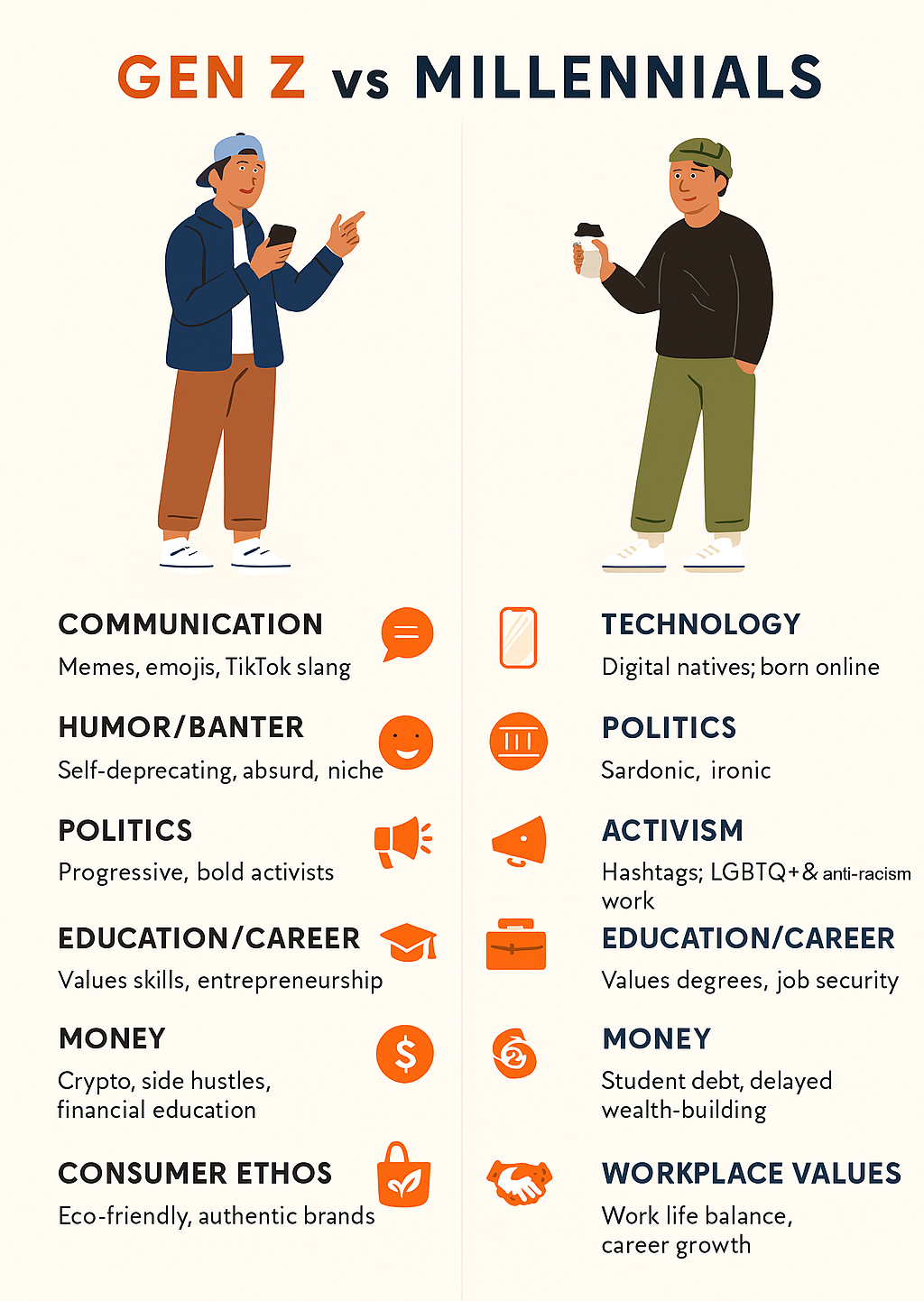
When you are a student, reading course material and spending hours in front of a computer are inescapable realities. But unfortunately, these present major eye strain issues that can make it more difficult for you to see as time goes on. So what can you do to reduce eye strain? You obviously cannot ditch your computer and use a typewriter-like they did way back when. However, while it is impossible to avoid computer eye strain altogether, there are strategies you can employ that can minimize the eye strain risks during your studies.
Today we all depend on digital technology to get things done. As a result, it should not come as a shock that Computer Vision Syndrome (which involves the straining of the eyes), has become very common among people who look at their computer monitors for extended periods of time. It has been reported that millions of patients on an annual basis who experience symptoms related to this condition seek treatment at the hospital. This is why it is important to be aware of eye strain warning for students and office workers alike.
The good news is that although the effects of eye strain might seem serious, they are generally only temporary and the condition can be cured once the steps to reduce eye strain are taken. On the other hand, when we stare at the computer monitor, our eyes are forced to work beyond their limits and we end up blinking less as a result. This can cause more long-term health problems such as the dry eye.
Of course, computer eye syndrome is not just limited to computers. When we use devices such as tablets, Kindle, and smartphones along with watching HD televisions, it can result in a lot of complications including itchy or burning eyes, increased sensitivity to light, blurred or double vision, difficulty with mental focus, headaches, dry, watery or red eyes, and soreness of the back, neck, and shoulder. With our heavy dependence on computers to meet our study, work, and entertainment needs, it is not a surprise that between 50 and 90 percent of people who use computers experience some of these visual and physical issues. The discomfort and fatigue isn’t just a health issue, it has a wider effect since it results in decreased productivity and can increase the number of work-related mistakes.
How to Avoid Computer Eye Strain
We offer several steps that can help you to reduce eye strain associated with Computer Vision Syndrome:
- Make an appointment to get your eyes checked
One of the best ways to monitor vision problems and even prevent them all together is to make a comprehensive eye exam an annual routine. As your eyes are being examined, inform the doctor about your computer habits, including how many hours per day you use it at home and work. Also, measure the typical distance between your eyes and the computer monitor when you are using a computer. This will allow the doctor to test your eyes at that particular distance.
- Appropriate lighting is important
One of the common causes of eye strain is excessively bright light coming from either interior lighting or sunlight. The degree of ambient lighting should be set to about 50% of the brightness usually found in office settings. Close window curtains or shuts the blinds in order to reduce outdoor light. Dim the indoor lights or use lower intensity bulbs. If you can help it, place your computer monitor to the side of a window rather than behind or in front of it.
- Reduce glare
Eye strain can also be caused by glare and reflections on the computer monitor. Use an anti-glare screen on your monitor and if the walls are bright white, paint them a darker color with a matte finish if you can. If you wear glasses, buy lenses containing an anti-reflective coating in order to reduce glare.
- Upgrade your display
If you do not already have one, buy a modern, flat panel display LCD monitor of at least 19 inches. Pick one with the highest resolution possible. They create fewer problems with the eyes and contain an anti-reflective surface. Those older monitors often cause images to flicker, a chief culprit of eye strain. In fact, even when you cannot perceive the flicker, the symptoms can still occur. By contrast, LCDs do not have issues related to flickering.
- Adjust your computer display settings
You can adjust your computer settings through the Control Panel (PC) or Systems Preference (Mac). Here are some of the settings you should adjust if you want to reduce eye strain:
- Brightness. Set the brightness so that it is at the same level as the environment around you. To test this, glance at the white background of this web page. If it resembles a light source, the brightness level is too high. If it looks grey, it is probably too dark.
- Color temperature. Reduce the light emitted by colors such as blue since they strain the eyes more than others such as red or orange.
- Text side and contrast. Change the size of the text as well as the contrast. This will make reading more comfortable for the eyes. Black text on a white background is ideal.
When using a computer for extended periods of time, people only blink around 1/3 as often as they typically should. In fact, studies have found that many of the blinks are only partial. To avoid potential issues such as dry or irritated eyes, make sure to blink enough as it keeps your eyes moist. In addition, when you blink less, the tears that coat the eye evaporate more quickly, which also increases dryness. In many cases, this problem is confounded further in office settings since the air there is often dry. If dryness of the eyes becomes a major problem, consult a doctor and ask about getting eye drops to use whenever you are working on a computer.
Keep in mind that the artificial tear eye drops that you need are not the same as the drops that can be used to reduce the appearance of redness. Aside from the fact that they serve entirely different purposes, they are not formulated in the same way.
Here is a trick that can help you reduce dry eye and moisten them in a natural way: While using a computer, pause every 20 minutes and slowly blink around 10 times.
- Take frequent (but shorter) breaks
In order to avoid computer vision syndrome and pain in the back, shoulders, and neck, take breaks while using the computer. When you work in an office, you are usually given a couple of 15-minute breaks per 8-hour shifts. However, instead of using all of the allocated minutes at once, you should break them into 6 short breaks of 5 minutes each. Studies have found that these breaks don’t result in reductions in productivity. In fact, the breaks actually speed up the worker’s ability to, for instance, enter data into a system. As a result, even with those breaks, the amount of time “lost” is more than compensated by the fact that the ability to briefly rest causes employees to work in a more efficient manner.
Also, consider a few brief exercise routines that you can take part in during your breaks. You can shop around online for books, as for advice from a fitness instructor, or even find websites that can offer suggestions for ways to keep your neck, back, shoulders and arms from experiencing pain as a result of computer vision syndrome.
- Modify your work or study area
Students and office employees who glance back and forth between printed paper and the computer monitor don’t realize that this can strain the eyes. The best way to deal with this is to place the printed materials on a copyholder next to the computer screen.
Make sure the copyholder is illuminated using something such as a desk lamp. However, avoid shining the lamp onto the computer screen or into your eyes.
Good posture is also essential. Do not slouch forward or extend the back of the chair. Sit up straight with the center of the screen around 15 degrees below your eyes. Make sure your chair is at the proper height. Positioning your monitor is important for preventing issues related to health and work productivity. Your eyes should be around 2 feet from the screen. All of this will prevent you from having to posturing yourself in awkward, uncomfortable ways.
- Correctly position the computer screen
Put the monitor in a place that avoids glare on the screen. There are two problems with screen glare. The first is that it can lead to eye strain and the second is that you could end up with sore muscles as a result of sitting in awkward positions in order to avoid the glare and read the screen.
Never put the monitor in front of the window or task lights. If you are sitting in the front of a computer and the light from outside or from a lamp is directly hitting your face, this will undoubtedly lead to eye strain issues. Try moving the monitor at an angle and if this is not possible, close the window blinds or turn off the lights.
Make sure the monitor is facing you directly. By sitting directly in front of the monitor, you will not be contorting your head or neck in awkward positions.
The top line of the screen should be a bit below eye level (around 15 degrees is optimal). Research has found that if you are sitting in an ideal position, your eyes will be directly in line with a point around 2.5 inches below the top of the monitor. When sitting at an angle of around 100 degrees, your long finger should be able to reach out to the middle of the screen. If you have found the right sitting position, you can then adjust the height and angle of the monitor. Ultimately, if the monitor is too low, your neck will slouch forward while if the monitor is too high, you will end up bending your head backward. The end result will be muscle pain in the shoulders and neck.
You may find this article useful: Writing Anxiety: How to Handle This Stressful Experience
The bottom line is this: if you want to avoid issues that can cause pain in the back, neck, and shoulders, how you sit along with the position your monitor really makes a difference!
- Zoom in and out
Another way to reduce eye strain when you are using a computer is to adjust the size of the text on the screen. You could do this by increasing the font, but if you are working on papers that require different sizes, it can be tedious to turn around and change them according to your professor’s instructions. Instead, you can accomplish this by zooming in. If you are typing a document on MS Word, you can do this by clicking the View tab and then selecting how much you wish to enlarge the text. You can also enlarge the text on a web page by holding down Ctrl and using the plus (+) sign to increase. To decrease, hold down Ctrl and the minus (-) sign.
- Give your eyes a mini workout
As you are doing computer tasks, pause every 2 hours, and move/roll your eyes around for a couple of minutes. It might make you feel a little silly, but it can really help. You should also find ways to relax your eyes. If you keep your eyes focused on the screen, they will eventually start to tire. To prevent fatigue, pause every 20 minutes from looking at the screen and focus your gaze on an object around 20ft (6m) away. Do this for around 20 seconds. This will cause your eye muscles to feel more relaxed and as a result, they will not feel as tired.
A second exercise involves focusing on your nearsightedness and farsightedness abilities. Gaze at an object a few feet away for around 10 seconds and then look at an object a few inches from your face for the same amount of time. Repeat this process 10 times. When you are working on a computer for extended periods of time, the eye muscles that control your focus tend to lock up (a medical condition known as accommodative spasm). This exercise will help prevent this.
Another technique to utilize if you are using a computer is to pause every 30 minutes and fix your gaze on something as far away as possible. Keep yourself focused on this for around two minutes.
Use your eyes and imagine that you are writing letters on a wall off in the distance. Do this without moving your head.
Engage in some blinking exercises in order to keep your eyes moist. If you wear contact lenses, this is especially important as your eyes can dry even quicker.
A few final suggestions that will help you avoid eye strain
- Coldwater and cucumbers
Are your eyes feeling tired? Splash some cold water on your face. This will soothe your eyes as it relaxes the eye muscles. Another option is to use an ice pack or wrap some ice cubes up in a paper towel and apply them directly to the eyes for a couple of minutes per eye. This will help your eye muscles feel better when they get sore. Yet another useful tip is to use cucumbers when you need to soothe your eyes. First, chill them in the fridge until they are cold. Once you feel that your eyes are strained, close them and put a slice of cucumber over each lid.
- Take a nap
Another very simple solution for eye strain is to do something that you would normally do when you are feeling fatigued: take a nap! If you are able to, take a little catnap in the afternoon. This can help your eyes feel refreshed. If you work in an office setting where this is not feasible, use your break time to rest your head on the desk and close your eyes for a few minutes.
- Eye massage
When your muscles ache, there is nothing better than a nice, old fashion massage. The same thing applies if your eye muscles are feeling tired. Warm-up your hands a bit by rubbing your palms together and then gently press them against the eyes for about 10 seconds. This should make your eyes feel better! Rubbing your temples can also relax you physically and mentally, which in turn can reduce eye strain.
- Spend less time on the computer
This might seem like a really obvious solution, but we’ve gotten into such a habit of using the computer and gadgets for everything! Yes, it is unlikely that you can avoid using the computer for work and study-related tasks. But there is no rule that says you always have to watch Netflix or play computer games when you need to unwind. Find another way to occupy yourself that does not involve straining your eyes. Get some fresh air, take up an outdoor hobby, or just play chess with a friend or family member. Not only will your eyes feel better, but you will also feel great overall!



